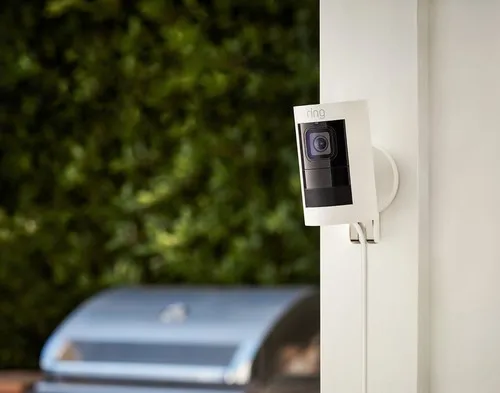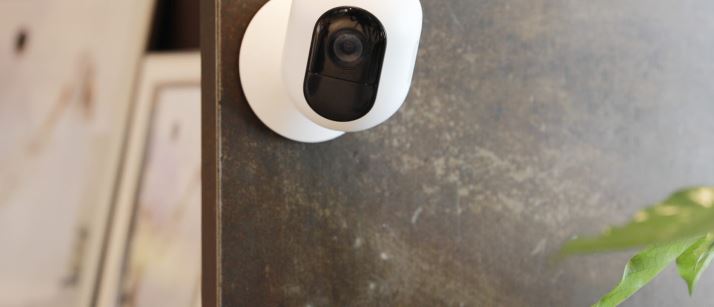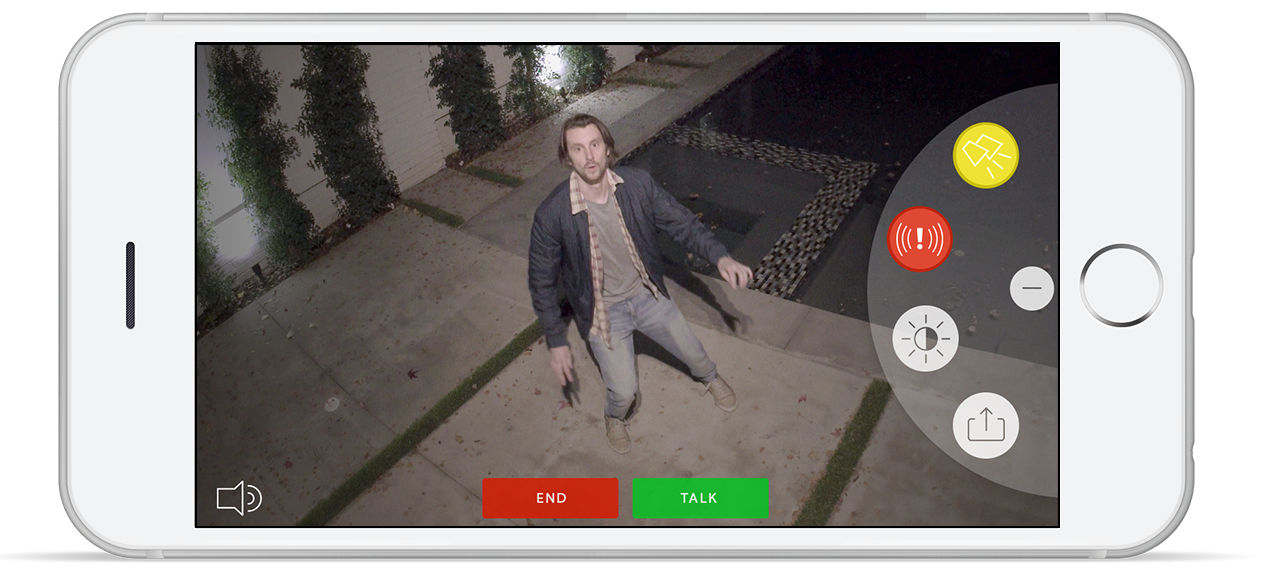7 Tips for Maximising the Effectiveness of Your Smart CCTV System

Understanding Your Smart CCTV System
A smart CCTV system is an excellent investment for your security needs. It provides several benefits, such as real-time monitoring, remote access, and intelligent analytics that detect unusual activity. With a smart CCTV system, you can deter potential criminals and capture evidence in case of a break-in or theft.
To identify the features and capabilities of your smart CCTV system, start by reviewing the user manual or contacting the manufacturer's customer support. You can also explore the settings and options within the system's interface to see what functionalities are available.
Knowing how to operate and manage your smart CCTV system effectively is crucial. Ensure you can access the system's software and hardware components, such as cameras, recording devices, and power sources. Also, ensure you have a secure network connection to prevent unauthorised access.
If you need to help to understand your smart CCTV system, several resources are available online and offline. You can browse through user forums and online communities or seek professional assistance from certified technicians or security experts.
A smart CCTV system is essential for protecting your property and assets. By understanding its features and capabilities and knowing how to operate it correctly, you can maximise its benefits and keep your premises safe and secure.
Choosing the Right Cameras for Your Needs
Several factors need to be considered when choosing cameras for your security needs. First, the camera's resolution is crucial as it determines the clarity of the footage captured. A higher resolution will provide more detail and make it easier to identify individuals or objects. Secondly, the field of view is essential as it determines how much the camera can cover. Cameras with a wider field of view are ideal for covering larger areas.
Another factor to consider is night vision capabilities. Cameras with infrared technology provide clear footage in low-light conditions, making them ideal for outdoor surveillance. Different types of cameras are available in the market, such as dome and bullet cameras. Dome cameras are discreet and can cover a wide area, while bullet cameras are more visible and have a longer range.
Choosing high-quality cameras with advanced features like motion detection technology or pan/tilt/zoom functionality is essential. Motion detection technology can alert you when there is movement in a specific area, while the pan/tilt/zoom function allows you to adjust the camera's position remotely.
Camera placement is also crucial as it affects the overall effectiveness of your surveillance system. Cameras should be placed strategically to cover all your property's entry points and vulnerable areas.
Choosing the right cameras for your security needs requires careful consideration of several factors such as resolution, the field of view, night vision capabilities, and advanced features like motion detection technology or pan/tilt/zoom functionality. It's also crucial to place cameras strategically for maximum coverage.
Optimising Camera Placement

Optimising camera placement is crucial to maximise coverage and minimise blind spots in surveillance areas. When positioning cameras, it's essential to consider the property layout and potential vulnerabilities. For example, cameras should be placed near entry points like doors and windows to capture potential intruders.
Proper positioning and angling are also crucial for optimal viewing angles. Cameras should be angled towards the area of interest, such as a driveway or front porch, for maximum coverage. It's also essential to avoid obstructions like trees or walls that could block the camera's view.
When installing outdoor vs indoor cameras, there are several considerations to remember. Outdoor cameras should be weather-resistant and have night vision capabilities to provide clear footage in low-light conditions. Indoor cameras should be discreet and blend into the surroundings while providing adequate coverage.
Strategies for maximising coverage while minimising blind spots include using multiple cameras to cover different angles and areas. Dome cameras are ideal for covering a wide area, while bullet cameras are more visible and have a longer range.
Optimising camera placement requires careful consideration of the property layout, potential vulnerabilities, proper positioning and angling, and choosing the right type of camera for indoor vs outdoor use. Following these best practices can maximise coverage and minimise blind spots in your surveillance areas.
Integrating Other Security Measures with Your Smart CCTV System
Integrating other security measures, such as alarms or access control systems, with your smart CCTV system can provide a more comprehensive approach to security. By combining multiple systems, you can create a more robust and effective security solution to quickly detect and respond to potential threats.
One of the benefits of integration is that it allows for real-time alerts and notifications across all systems. For example, if an alarm is triggered, the CCTV system can automatically start recording, providing valuable footage for later analysis.
To integrate different systems effectively, choosing compatible technologies that can communicate seamlessly with each other is essential. Ensuring all components are properly installed and configured to work together is also crucial.
When integrating different security measures, it's important to consider the property layout and potential vulnerabilities. For example, access control systems are ideal for securing entry points like doors and gates, while alarms are effective at detecting unauthorised entry.
Integrating different security measures with your smart CCTV system can provide a more comprehensive approach to security. Choosing compatible technologies and considering property layouts and potential vulnerabilities can create a robust and effective security solution that protects your property and assets.
Using Motion Detection Technology Effectively
Motion detection technology is a crucial feature of smart CCTV systems. The technology detects changes in the camera's field of view, such as movement or motion. When motion is detected, the system can trigger an alert or start recording, providing valuable footage for later analysis.
One of the advantages of using motion detection technology is that it can provide real-time alerts if movement is detected after hours or in restricted areas. This can help prevent potential security breaches and allow for quick action to be taken.
Setting up appropriate sensitivity levels is crucial to avoid false positives while capturing all necessary footage. If the sensitivity level is too high, the system may trigger alerts for minor movements like leaves blowing in the wind. On the other hand, if the sensitivity level is too low, important footage may be missed.
Examples where motion detection has been used successfully, include detecting intruders attempting to break into a property or identifying suspicious activity in restricted areas like server rooms or storage areas.
Motion detection technology is a powerful tool that can enhance the effectiveness of your smart CCTV system. By setting up appropriate sensitivity levels and using them strategically, you can maximise its benefits and improve your overall security measures.
Regular Maintenance Checks & Testing

Regular maintenance checks and testing are essential to ensure that your CCTV system functions correctly and provides optimal security. These checks should be conducted regularly to identify any issues or faults before they become a more significant problem.
During maintenance, several components, including the cameras, cables, and power supply, should be checked. Cameras should be inspected for any damage or signs of wear and tear. Cables should be checked for any fraying or damage that could affect the quality of the footage. The power supply should also be inspected to ensure it is working correctly.
Maintenance checks should be conducted at least once every six months, although more frequent checks may be necessary if the system is in constant use or exposed to harsh environmental conditions.
To test your CCTV system regularly, you can conduct a series of tests to ensure it functions correctly. This includes checking the camera's field of view and adjusting it if necessary, testing motion detection technology by walking through surveillance areas, and verifying that footage is recorded and stored correctly.
Regular maintenance checks and testing are crucial to ensure that your CCTV system functions correctly and provides optimal security. By conducting these checks at regular intervals, you can identify any issues early on and prevent potential security breaches.
CloudBased Storage Solutions
Cloud-based storage solutions offer several advantages over traditional onsite hardware. One of the main benefits is that cloud storage provides a more secure and reliable way to store video footage. Cloud storage is also highly scalable, allowing you to store large amounts of data without worrying about running out of space.
Popular cloud-based storage solutions for smart CCTV systems include Amazon Web Services (AWS), Google Cloud Storage, and Microsoft Azure. These platforms offer a range of features and pricing options, making choosing the right solution based on your needs easy.
When choosing a cloud-based storage solution, it's important to consider factors like cost, security features, and scalability. You should also ensure the solution integrates seamlessly with your existing CCTV system.
Managing large amounts of video data using cloud-based storage solutions requires a few tips and tricks. One strategy is to set up automatic archiving and deletion policies to help manage storage costs. It's also essential to use compression and other data reduction techniques to minimise the amount of data stored.
Cloud-based storage solutions offer several advantages over traditional onsite hardware, including improved security, scalability, and reliability. Choosing the right solution and implementing effective management strategies can maximise the benefits of cloud storage for your smart CCTV system.
Staff Training & Education
Training staff members on how to use the smart CCTV system effectively is crucial to ensure that the system is being used correctly and provides optimal security. A comprehensive training program should cover all necessary aspects, including operating the cameras, access control systems, and alarms.
To create a comprehensive training program, it's essential to identify your organisation's specific needs and tailor the training accordingly. The training program should also include hands-on practice sessions and simulations to help staff members understand how to respond in case of an incident.
Having well-trained staff members who can respond quickly in case of an incident is essential for effective security measures. Staff trained to use the smart CCTV system can identify potential security breaches and take appropriate action to prevent them from occurring.
Ongoing education and upskilling opportunities are crucial to ensure staff members remain up-to-date with the latest technology and best practices. This can include attending seminars or workshops, participating in online courses or webinars, or receiving regular updates on new features or updates.
Training staff members to use the smart CCTV system effectively is crucial for ensuring optimal security measures. A comprehensive training program that covers all necessary aspects, including hands-on practice sessions and simulations, can help staff members respond quickly and appropriately in case of an incident. Ongoing education and upskilling opportunities also enable staff members to remain up-to-date with the latest technology and best practices.
Using Analytics Software Tools Effectively
Analytics software tools like facial recognition algorithms or object tracking software programs are powerful tools that can enhance the effectiveness of your smart CCTV system. These tools use advanced algorithms to analyse video footage and identify patterns of behaviour or objects within the footage.
One of the main advantages of using analytics software tools is that they can identify suspicious behaviour patterns over time. This can help security personnel detect potential security breaches before they occur and take appropriate action to prevent them.
Setting up appropriate sensitivity levels is crucial to avoid false positives while still capturing all necessary footage. If the sensitivity level is too high, the system may trigger alerts for minor movements like leaves blowing in the wind. On the other hand, if the sensitivity level is too low, important footage may be missed.
Examples where analytics software tools have been used successfully, include identifying individuals who have been banned from a property and tracking their movements, detecting unauthorised access attempts to secure areas, and identifying suspicious behaviour patterns in public areas like airports or train stations.
When choosing an analytics software tool, it's important to consider factors like cost, compatibility with your existing CCTV system, and ease of use. You should also ensure that the tool integrates seamlessly with your existing security measures.
Analytics software tools are powerful tools that can enhance the effectiveness of your smart CCTV system. By setting up appropriate sensitivity levels and using these tools strategically, you can maximise their benefits and improve your overall security measures.
Password Protection Protocols
Password protection protocols are essential to ensure the security of your smart CCTV system. Passwords protect sensitive data and prevent unauthorised access to your system, which could compromise your security measures.
Password protection protocols should include guidelines for creating strong passwords, such as using a combination of upper and lowercase letters, numbers, and symbols. Passwords should also be changed regularly, typically every 90 days, to prevent unauthorised access.
Best practices when setting up user accounts with different access rights include assigning unique usernames and passwords for each user, limiting access to only those who need it, and regularly reviewing and updating access levels as necessary.
When updating passwords, it's important to use a different password for each account and avoid using easily guessable information like birthdates or names. Passwords should also be stored securely and not shared with anyone else.
Examples where password protection protocols have been successfully implemented, include preventing unauthorised access attempts to secure areas and detecting potential security breaches before they occur.
Password protection protocols are crucial for ensuring the security of your smart CCTV system. By including guidelines for creating strong passwords, regularly updating passwords, and limiting access to only those who need it, you can maximise the benefits of password protection for your security measures.
Adding Audio Recording Capabilities
Adding audio recording capabilities to your smart CCTV system can provide several benefits, including enhanced security measures, improved situational awareness, and better evidence gathering in case of an incident. Audio recording devices like microphones and speakers can help capture important audio data alongside the video footage.
Microphones can be used to capture audio data from specific areas, while speakers can be used for two-way communication. This can be particularly useful in public areas like airports or train stations, where security personnel can communicate with individuals in real time.
When installing audio recording devices alongside cameras, it's essential to consider privacy concerns. For example, it may not be appropriate to install microphones in private areas like restrooms or changing rooms.
Legal considerations around audio recordings within a surveillance network are also important to keep in mind. In some jurisdictions, it may be necessary to obtain consent from individuals before recording their conversations.
Overall, adding audio recording capabilities to your smart CCTV system can enhance your security measures and improve situational awareness. However, it's important to consider privacy concerns and legal considerations when installing these devices.
Final Thoughts: Maximising Your Smart CCTV System's Effectiveness
Smart CCTV systems are an essential tool for enhancing security measures in various settings, including public areas, businesses, and residential properties. By implementing the tips discussed earlier, you can maximise the effectiveness of your smart CCTV system and improve overall security.
Some additional considerations for maximising your smart CCTV system's effectiveness include regularly reviewing footage to identify potential security breaches, monitoring access to secure areas, and ensuring that all equipment is well-maintained and up-to-date.
Staying up-to-date with new technologies and trends in smart CCTV systems is also crucial for maximising their effectiveness. This can include attending conferences or seminars, participating in online forums or webinars, or consulting with industry experts.
If you're unsure about how to optimise your smart CCTV system's effectiveness, seeking professional support or consulting services can be a wise decision. By working with experts who have experience in designing and implementing effective security measures, you can ensure that your smart CCTV system is optimised for maximum effectiveness.
By implementing the tips discussed earlier and considering additional factors like a regular review of the footage, monitoring access to secure areas, staying up-to-date with new technologies and trends, and seeking professional support as needed, you can maximise the effectiveness of your smart CCTV system.
